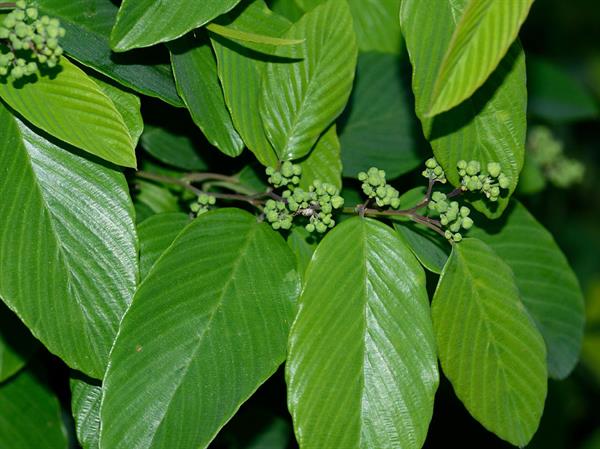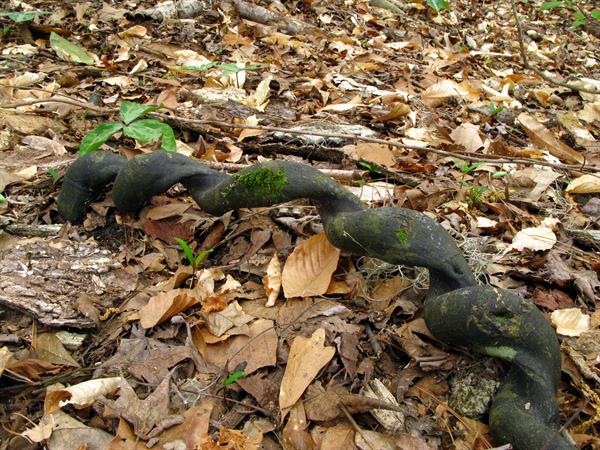
ID notes:The smooth gray bark on larger vines (often marred by sapsucker wells) is distinctive even when the leaves are high overhead; vines can be at least 18 cm in diameter. Younger twigs are bright green (or reddish tinted if sun-grown), and the neatly pinnate venation is also distinctive.
Origin/Endemic status: Native
Other Comments: Berchemia scandens climbs high into the crowns of swamp trees.
Synonymy: = C, F, FNA12, G, GW2, Il, K1, K3, K4, NcTx, RAB, S, S13, Tat, Tn, Tx, Va, WH3, Brizicky (1964a)
Wetland Indicator Status:
- Atlantic and Gulf Coastal Plain: FAC
- Eastern Mountains and Piedmont: FACW
- Great Plains: FAC
- Midwest: FAC
Heliophily: 5
Hover over a shape, letter, icon, or arrow on the map for definition or see the legend.
 © Bruce A. Sorrie | Original Image ⭷
© Bruce A. Sorrie | Original Image ⭷ © Scott Ward | Original Image ⭷
© Scott Ward | Original Image ⭷ © Gary P. Fleming | Original Image ⭷
© Gary P. Fleming | Original Image ⭷ © Aidan Campos source | Original Image ⭷
© Aidan Campos source | Original Image ⭷ © Alan Cressler: Berchemia scandens, Oaky Woods Wildlife Management Area, Houston County, Georgia 1 by Alan Cressler source | Original Image ⭷
© Alan Cressler: Berchemia scandens, Oaky Woods Wildlife Management Area, Houston County, Georgia 1 by Alan Cressler source | Original Image ⭷ © Scott Ward | Original Image ⭷
© Scott Ward | Original Image ⭷ © Gary P. Fleming | Original Image ⭷
© Gary P. Fleming | Original Image ⭷ © Sonnia Hill | Original Image ⭷
© Sonnia Hill | Original Image ⭷ © Gary P. Fleming | Original Image ⭷
© Gary P. Fleming | Original Image ⭷ © Alan Cressler: berchemia scandens, montezuma bluffs natural area, macon county, georgia 1 by Alan Cressler source | Original Image ⭷
© Alan Cressler: berchemia scandens, montezuma bluffs natural area, macon county, georgia 1 by Alan Cressler source | Original Image ⭷ © Radford, Ahles and Bell | Original Image ⭷
© Radford, Ahles and Bell | Original Image ⭷Feedback
See something wrong or missing on about Berchemia scandens? Let us know here: (Please include your name and email if at all complicated so we can clarify if needed.)
Cite as...